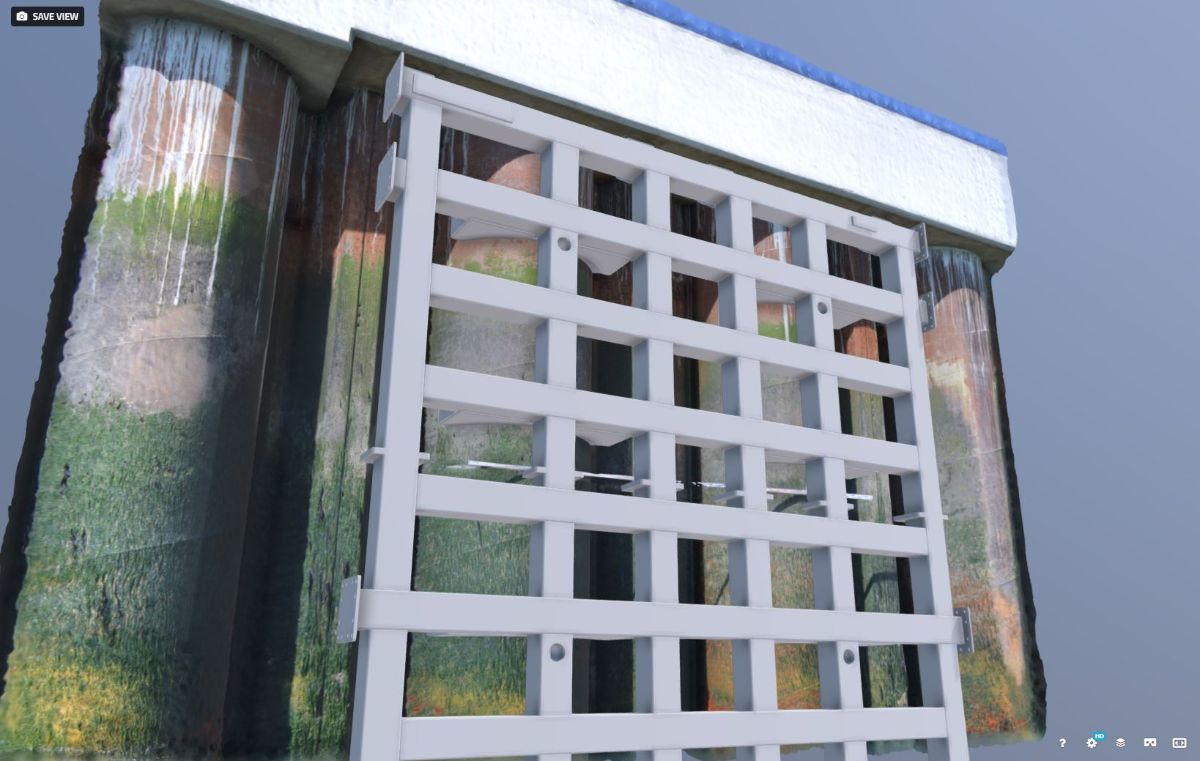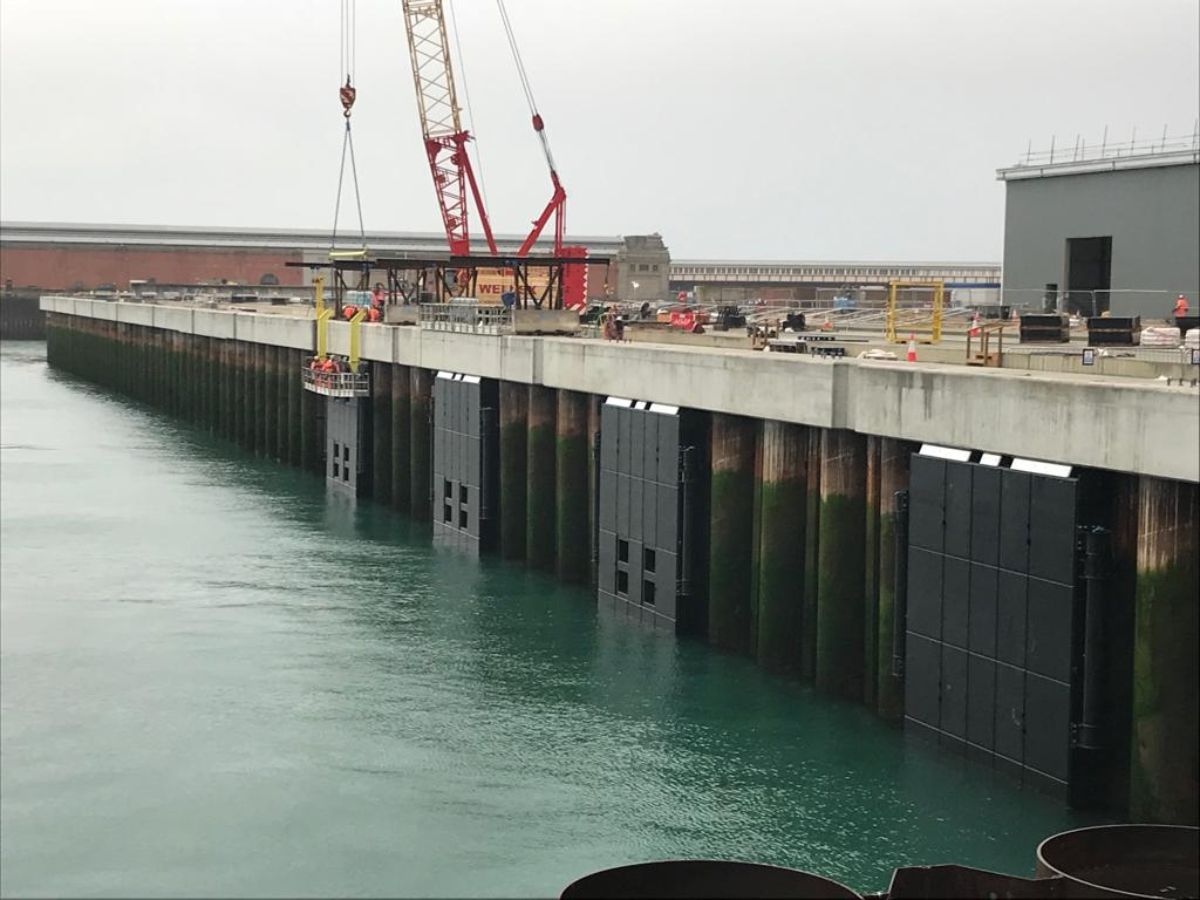Client: Port of Dover
Main contractor: Volker Stevin
Consultant: Ramboll
The Port of Dover has favoured the use of Yokohama style floating pneumatic fenders at its port for many years. So when it embarked on redevelopment of its western harbour, the Dover Western Docks Revival (DWDR) project, it prescribed the use of this type of fender on the 2 main cargo/cruise berths.
The main new berths for the project consisted of combi-wall piled structures with a concrete caps. The undulating surface between the king piles did not lend itself as a suitable breasting surface for supporting floating pneumatic fenders as this would reduce the fender performance and create additional wear on the fender’s chain and tyre net.
The client specified that a breasting panel should be provided with a sliding fender chain restraint rail attached on each side. With a tidal range of just over 7m and a breasting face of 9.5m, attaching a total quantity of 27 panels was not going to be an easy task. The problem was further exacerbated by the piling tolerances of the combi-wall, where king piles can be out of position within a ±75mm range in any direction, including verticality.
The engineers at Ship2Shore supported the installation sub-contractor by designing a panel that would be installed plumb and could be adjusted on site to fit perfectly on the piled wall.
The solution called first for a survey of the piles after driving but before the concrete cap was cast. This gave a rough guide prior to settlement of the piles and indicated the range of irregularities of pile positions so that if was known in advance what adjustments we would need to be built into the panel to pile attachments.
The next stage was to take a laser scan of the piles at each fender location, capturing the image using photogrammetry. This allowed a reconstruction of each location to millimetre accuracy on our 3D CAD models. It was then possible to pre-set each panel to each location in the factory prior to dispatch, leaving just one final adjustment on site with the aid of a 3 dimensional template to correct any error or interferences.
The result was that each panel fitted like a glove. The panels were faced with UHMW-PE to create a hard wearing flat surface, with the same low friction material being used to reduce forces in the mooring chains. The same material was used on the sliding chain restraints on the mooring posts.






